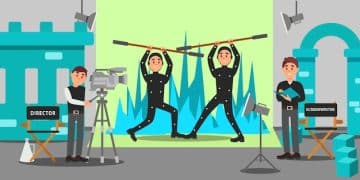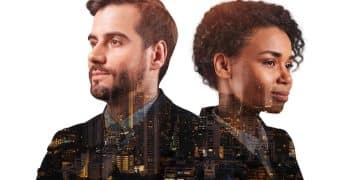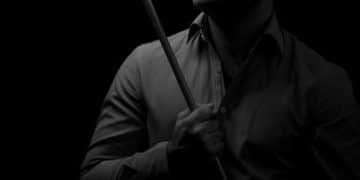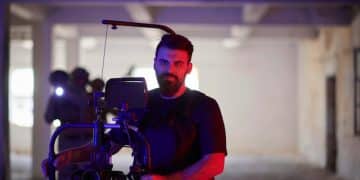The Makeup Artist’s Magic: Dramatic Actor Transformations Revealed
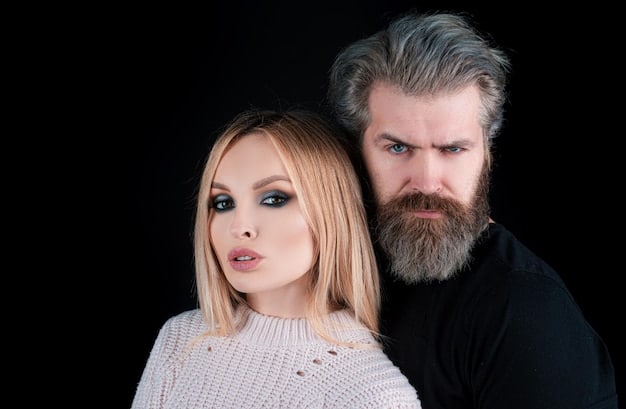
The Makeup Artist’s Magic: Transforming Actors for Dramatic Finale Reveals the meticulous artistry required to create believable character transformations through makeup, enhancing the narrative impact of a dramatic finale.
The world of acting is one of transformation, where performers embody different characters, often requiring dramatic shifts in appearance. Behind these striking changes lies the makeup artist’s magic: transforming actors for dramatic finale reveals a world of meticulous artistry and technical prowess.
The Crucial Role of Makeup Artists in Film
Makeup artists are more than just beauticians; they are integral storytellers. They use their skills to enhance character development, depict age and health, and even create fantastical creatures. Their work helps the audience believe in the reality of the story unfolding before their eyes.
Enhancing Character Authenticity
Makeup is a powerful tool for creating believable characters. By using techniques like contouring, highlighting, and shading, makeup artists can subtly alter an actor’s appearance, making them appear older, younger, or even ill. These details add depth and authenticity to the performance.
Creating Visual Storytelling
Makeup can also be used to tell stories visually. Scars, tattoos, and other markings can reveal a character’s past and motivations. In a dramatic finale, these details can be particularly impactful, adding layers of meaning to the narrative.
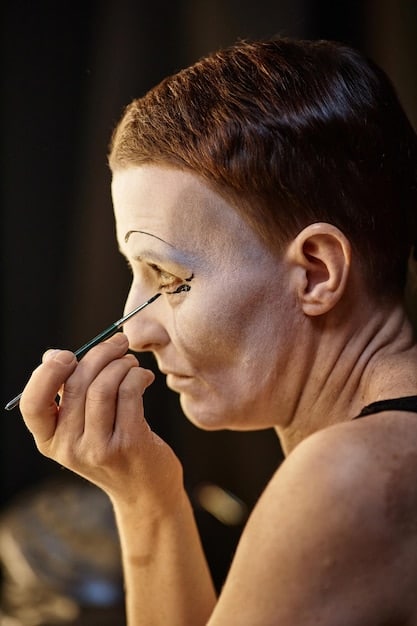
- Understanding the script and character arc.
- Collaborating with the director and costume designer.
- Conducting research to ensure accuracy.
- Using high-quality products and tools.
In essence, the makeup artist’s role extends far beyond simple beautification. It is about bringing characters to life and enhancing the visual storytelling of the film.
The Art of Prosthetic Makeup
Prosthetic makeup involves creating three-dimensional additions to an actor’s face or body. This can range from simple noses and ears to entire facial transformations, allowing actors to portray characters that are vastly different from their natural appearance.
Sculpting and Molding
The process begins with sculpting the prosthetic piece, often using clay or other moldable materials. A mold is then made from the sculpture, and the prosthetic is created using materials like silicone or latex.
Application and Blending
Applying prosthetic makeup requires patience and precision. The prosthetic piece must be carefully glued to the actor’s skin, and the edges must be seamlessly blended to create a natural appearance. This often involves using specialized adhesives and blending techniques.
The impact of prosthetic makeup can be transformative, allowing actors to fully immerse themselves in their roles and bring extraordinary characters to life.
Tools and Techniques of the Trade
A makeup artist’s toolkit is extensive, filled with brushes, sponges, palettes, and specialized products. Mastering the use of these tools and techniques is essential for creating believable transformations.
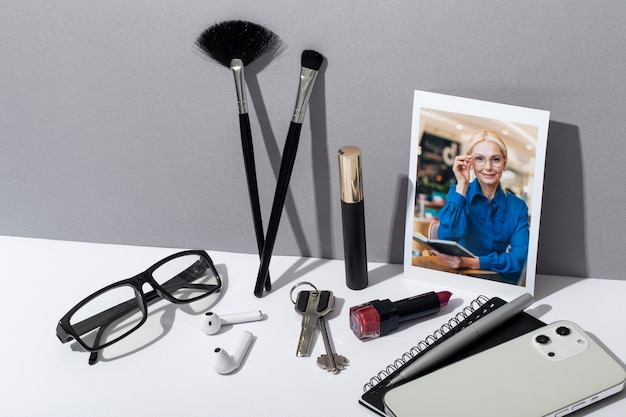
Essential Makeup Tools
Brushes are used for applying foundation, concealer, eyeshadow, and other products. Sponges are helpful for blending and creating a smooth, even finish. Palettes contain a variety of colors and shades for creating different looks.
Advanced Makeup Techniques
Contouring and highlighting are used to sculpt the face and create dimension. Airbrushing is a technique that uses compressed air to apply makeup evenly. Special effects makeup involves creating realistic wounds, scars, and other injuries.
- Proper hygiene and sanitation practices.
- Understanding skin types and sensitivities.
- Knowing how to create different makeup looks.
- Staying up-to-date with the latest trends.
In short, the technical skills and artistic vision are crucial in the world of makeup artistry.
Preparing Actors for Extreme Transformations
Transforming actors for physically challenging roles requires careful planning and execution. The makeup artist must work closely with the actor to ensure their comfort and safety throughout the process.
Consultation and Collaboration
Before beginning any transformation, the makeup artist should consult with the actor to discuss their concerns and preferences. This collaboration ensures that the actor feels comfortable and confident with the final look.
Comfort and Safety
Some makeup applications, such as those involving prosthetics or heavy makeup, can be time-consuming and uncomfortable. The makeup artist must take steps to minimize discomfort and ensure the actor’s safety.
Transforming actors for physically challenging roles requires more than just technical skill; it requires empathy and collaboration to prioritize actor comfort and safety throughout the filming.
Memorable On-Screen Transformations
Throughout film history, many actors have undergone remarkable transformations for their roles. These transformations showcase the power of makeup to bring characters to life and enhance the storytelling experience.
Examples of Iconic Transformations
Charlize Theron’s transformation in “Monster” is a testament to the power of makeup. Her appearance was dramatically altered through the use of prosthetics and makeup, which led audiences to see her in a new light.
The Impact on Performances
Makeup can have a profound impact on an actor’s performance. When an actor looks the part, it helps them to fully embody the character and bring a depth of authenticity to their portrayal.
These examples showcase the remarkable ability of makeup artists to create transformative looks that enhance performances and leave a lasting impression on audiences.
The Future of Makeup Artistry in Film
As technology continues to evolve, the field of makeup artistry is also changing. New materials, techniques, and digital tools are opening up new possibilities for creating even more realistic and fantastical transformations to continue with the makeup artist’s magic: transforming actors for dramatic finale reveals.
The Rise of Digital Makeup
Digital makeup, also known as VFX makeup, involves using computer graphics to enhance or alter an actor’s appearance. This technique can be used to create subtle changes, such as smoothing out wrinkles, or more dramatic transformations, like creating entirely new characters.
The Continued Importance of Practical Effects
Despite the rise of digital makeup, practical effects still play an important role in film. Practical effects offer a level of realism that can be difficult to achieve with digital tools alone. The combination of practical and digital effects will continue to push the boundaries of what is possible in film.
- Experimenting with new materials.
- Learning digital makeup techniques.
- Collaborating with VFX artists.
- Developing new storytelling strategies.
Ultimately, the future of makeup artistry in film is one of collaboration and innovation, where digital and practical techniques work together to create unforgettable on-screen transformations.
| Key Aspect | Brief Description |
|---|---|
| 🎨 Role of Makeup Artists | Enhance characters, tell stories visually. |
| 🎭 Prosthetic Makeup | Transform actors with 3D additions. |
| 🧰 Essential Tools | Brushes, sponges, palettes for various looks. |
| 🎬 Future Trends | Digital makeup and practical effects combine. |
[FAQ on Makeup Transformation]
▼
Makeup artists are crucial for character development, altering appearances to fit roles. They work closely with directors to visually enhance the story, ensuring makeup aligns with the artistic vision.
▼
Makeup artists employ techniques like contouring, highlighting, prosthetics, and special effects to alter an actor’s appearance. These techniques help create realistic and believable character transformations for the screen.
▼
Makeup artists prioritize the comfort and safety of actors during long applications. They maintain open communication, use skin-friendly products, and take breaks to prevent discomfort and ensure a positive experience.
▼
Iconic transformations include Charlize Theron in “Monster,” where makeup and prosthetics drastically changed her appearance. Johnny Depp in many roles also showcases makeup artistry through different characters.
▼
The future of makeup artistry will combine practical effects with digital techniques to create more immersive transformations. As technology advances, makeup artists will use innovative methods to enhance storytelling on screen.
Conclusion
The makeup artist’s magic: transforming actors for dramatic finale reveals is an essential part of filmmaking. With skill and artistry, makeup artists transform actors into characters, and create unforgettable moments on screen. From simple enhancements to dramatic transformations, makeup artists bring stories to life, leaving a lasting impact on audiences.
